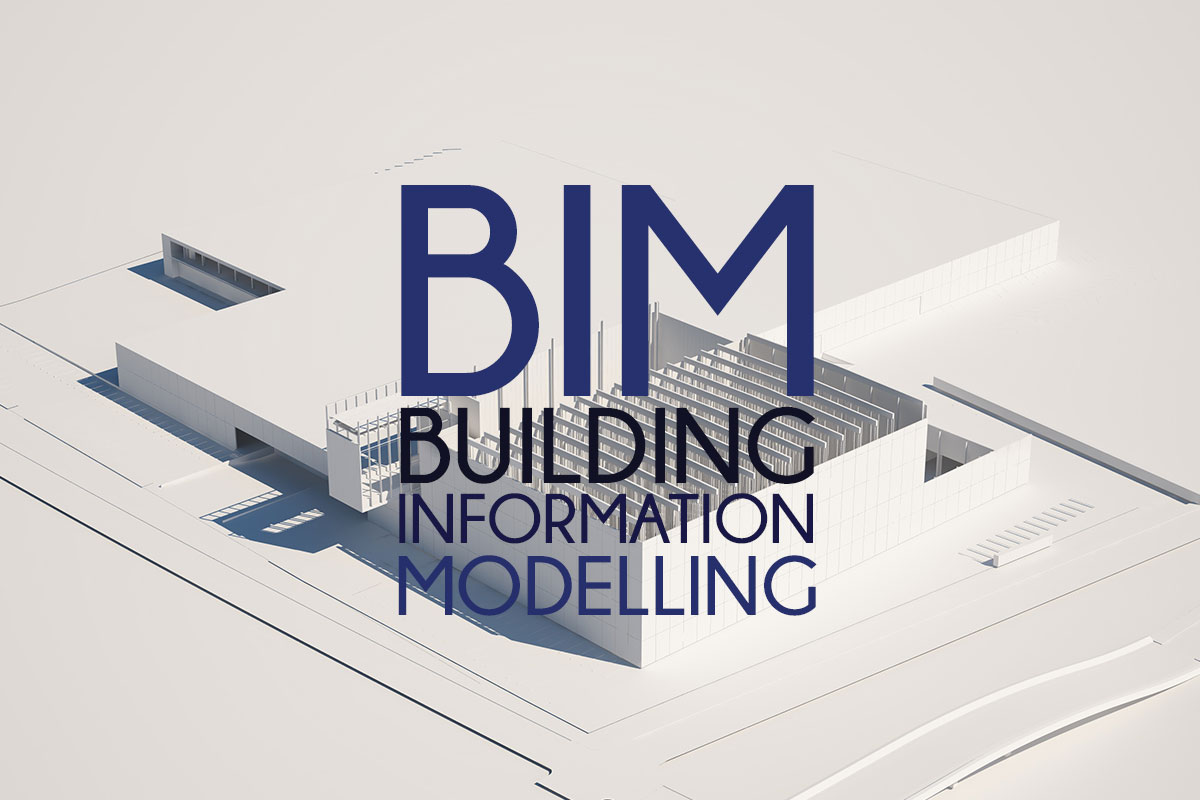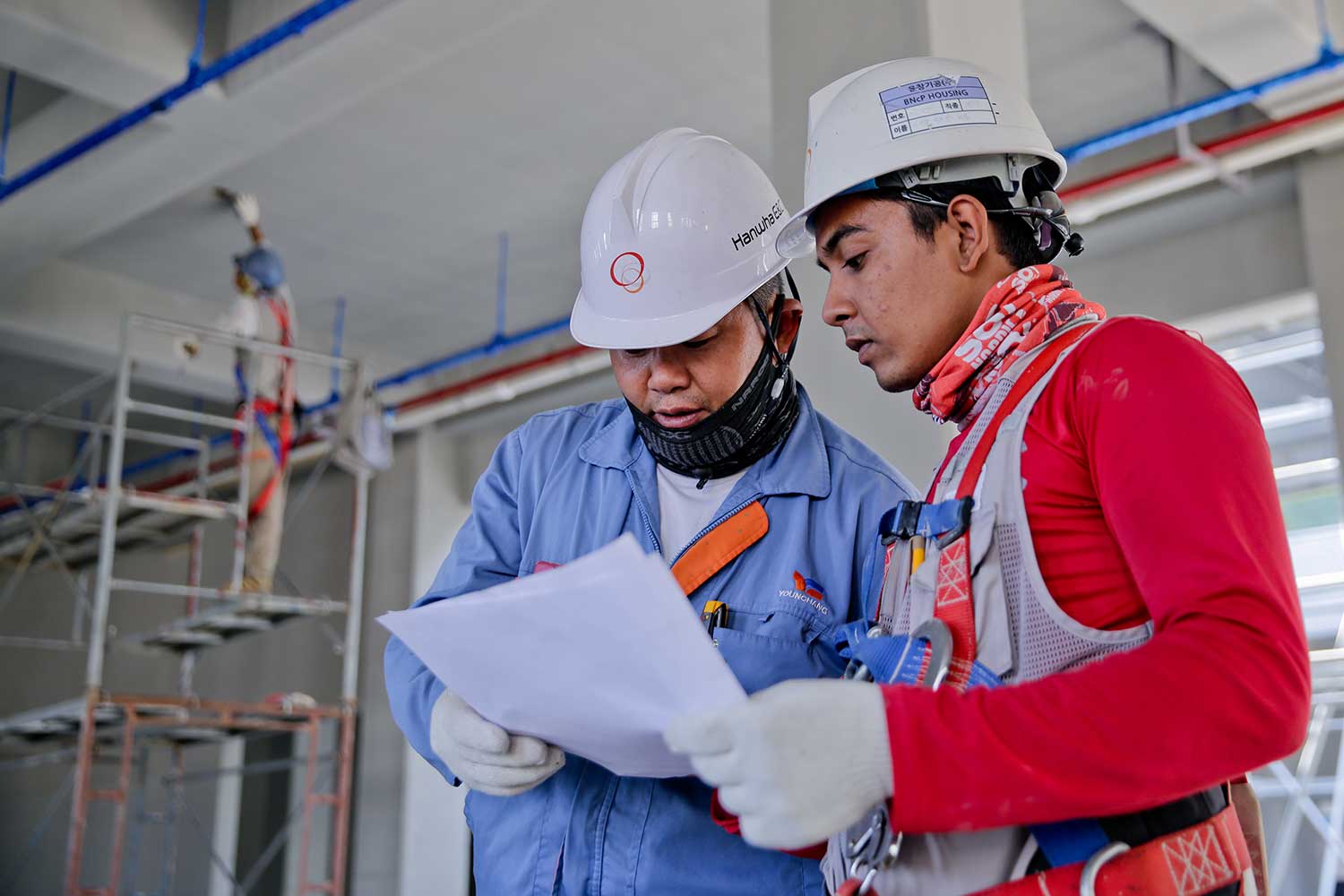Home>diy>Building & Construction>What Does IPD Stand For In Construction


Building & Construction
What Does IPD Stand For In Construction
Modified: January 6, 2024
Discover what IPD stands for in the context of building construction and how it impacts the construction process. Gain insight into the significance of IPD in streamlining collaboration and enhancing project outcomes.
(Many of the links in this article redirect to a specific reviewed product. Your purchase of these products through affiliate links helps to generate commission for Storables.com, at no extra cost. Learn more)
Introduction
Welcome to the world of construction, where innovation and collaboration are the building blocks of success. In this ever-evolving industry, staying ahead of the game is crucial. One approach that has gained traction in recent years is Integrated Project Delivery (IPD). But what exactly does IPD stand for, and how does it impact the construction process?
IPD, or Integrated Project Delivery, is a collaborative approach to construction project management that brings together all key stakeholders – from architects and engineers to contractors and subcontractors – from the very beginning of a project. This collaborative effort aims to maximize efficiency, minimize waste, and deliver high-quality construction projects on time and within budget.
So how does IPD differ from traditional construction methods? In a traditional construction project, each stakeholder operates independently, often following a sequential process where one phase is completed before the next one begins. This siloed approach can result in miscommunication, delays, and costly change orders.
On the other hand, IPD is all about breaking down these silos and fostering a culture of collaboration and transparency. The goal is to create a highly integrated team that works together to streamline the entire construction process from start to finish.
Implementing IPD requires a shift in mindset and a commitment from all project participants to work towards a common goal. By involving all stakeholders early on, IPD enables better decision-making, improved coordination, and enhanced problem-solving throughout the project lifecycle.
Over the years, IPD has emerged as a transformative approach to construction, offering a wide range of benefits to both project teams and clients. In the following sections, we will explore the key advantages of using IPD in construction and also discuss some of the challenges that can arise during its implementation. But first, let’s delve deeper into how IPD is applied in the construction industry.
Key Takeaways:
- Integrated Project Delivery (IPD) revolutionizes construction by fostering early collaboration, efficient decision-making, and transparent communication among all stakeholders. This collaborative approach leads to cost savings, accelerated schedules, and enhanced project quality.
- Despite challenges, successful case studies showcase the transformative power of IPD, delivering state-of-the-art facilities within budget and schedule. By embracing IPD, construction professionals can unlock the full potential of their projects and exceed client expectations.
Read more: What Does SD Stand For In Construction
Definition of IPD
Integrated Project Delivery (IPD) is a project delivery method that emphasizes collaboration, integration, and shared risk and reward among all key stakeholders involved in a construction project. It is a departure from the traditional design-bid-build or design-build approaches, which often result in disjointed communication, conflicts, and inefficiencies.
At its core, IPD seeks to align the goals and interests of all project participants, including the owner, architect, engineer, contractor, subcontractors, and suppliers. By involving all parties from the beginning of the project, IPD aims to foster an environment where knowledge and expertise are shared, decision-making is collaborative, and risks and rewards are shared collectively.
Under the IPD model, project teams work together in a multi-party agreement, creating a collaborative structure that encourages open communication and trust. This agreement typically includes various key elements, such as a team charter, joint risk management procedures, shared financial incentives, and a clearly defined dispute resolution process.
The success of IPD hinges on effective communication and collaboration among all stakeholders. Regular meetings, workshops, and interdisciplinary coordination are essential to ensure that everyone is on the same page regarding project goals, objectives, and constraints.
In addition to the collaborative nature of IPD, technology plays a significant role in supporting and enhancing the process. Building Information Modeling (BIM) is often employed to create a virtual 3D representation of the project, enabling stakeholders to visualize and coordinate their work in a virtual environment. This shared digital platform facilitates efficient decision-making, clash detection, and coordination among various design and construction disciplines.
Overall, IPD is about breaking down barriers and fostering a culture of collaboration, integration, and continuous improvement. It promotes a holistic approach to project delivery and aims to deliver projects that meet or exceed the owner’s expectations in terms of quality, schedule, and cost.
IPD in Construction
Integrated Project Delivery (IPD) brings a paradigm shift in the way construction projects are executed. It encourages early involvement of all project stakeholders, including owners, architects, engineers, contractors, and subcontractors, to collaboratively plan and execute the project from start to finish. This holistic approach ensures seamless coordination, increased efficiency, and improved project outcomes.
One of the core principles of IPD is the formation of a multi-party agreement among all project participants. This agreement establishes the project’s objectives, outlines the roles and responsibilities of each stakeholder, and lays out the terms for risk-sharing and decision-making. By establishing this shared understanding and commitment, IPD creates a collaborative environment that promotes effective communication, minimizes conflicts, and maximizes synergy.
In an IPD project, the design, construction, and potentially even the operation phases are integrated into a single, cohesive effort. This integration allows for early and ongoing collaboration between architects, engineers, and contractors, resulting in optimized designs, streamlined construction processes, and reduced risks of errors or rework.
One of the key features of IPD is joint project planning and decision-making. Through collaborative work sessions and workshops, stakeholders collectively identify project goals, establish performance targets, and develop strategies to meet these objectives. This alignment of interests and shared decision-making allows for early problem identification and resolution, leading to a more efficient and cost-effective construction process.
Additionally, IPD emphasizes the use of technology, such as Building Information Modeling (BIM), to facilitate integrated design and construction activities. BIM enables the creation of a digital representation of the project, allowing stakeholders to visualize the design, identify clashes, and optimize the construction process before breaking ground. This virtual collaboration platform enhances coordination among all disciplines, reduces rework, and improves project scheduling and sequencing.
Another important aspect of IPD is the emphasis on transparency and open-book accounting. In an IPD project, all stakeholders have access to project cost data, including budgets, expenses, and financial forecasts. This level of transparency builds trust among team members and enables better cost control and financial management.
Overall, IPD fundamentally transforms the construction process by fostering collaboration, integration, and knowledge sharing. This approach helps avoid the pitfalls of traditional delivery methods, such as communication breakdowns, disputes, and cost overruns. By embracing IPD, construction projects can benefit from improved efficiency, reduced risks, better project outcomes, and ultimately, satisfied clients.
Benefits of IPD in Construction
Integrated Project Delivery (IPD) offers numerous benefits to construction projects, enhancing collaboration, efficiency, and overall project success. By breaking down silos and promoting a culture of integration, IPD brings stakeholders together from the beginning, resulting in the following key advantages:
- Early Collaboration: IPD encourages early involvement of all project participants, allowing for enhanced collaboration and knowledge sharing. This early collaboration enables better project planning, risk identification, and problem-solving, leading to improved project outcomes.
- Efficient Decision-Making: In IPD, decisions are made collectively and in a collaborative environment. By involving all stakeholders, project teams can leverage diverse perspectives and expertise, leading to informed and efficient decision-making. As a result, changes and conflicts can be addressed proactively, minimizing delays and avoiding costly rework.
- Reduced Project Duration: With all stakeholders working together from the outset, IPD reduces project duration by optimizing the construction process. Early involvement of contractors and subcontractors enables improved constructability, value engineering, and efficient resource allocation, resulting in accelerated project schedules.
- Cost Savings: By fostering collaboration and early involvement of all stakeholders, IPD can help identify and mitigate potential issues before they become costly problems. The integrated approach reduces the chances of design errors, rework, and change orders, resulting in cost savings for the project.
- Improved Quality: IPD emphasizes a holistic approach to project delivery, ensuring coordination between design, construction, and other project disciplines. This integrated approach enhances the quality of the construction by reducing the chances of communication gaps, conflicts, and errors. The result is a higher-quality finished product that meets or exceeds the owner’s expectations.
- Enhanced Risk Management: IPD promotes shared risk and reward among all project participants. By aligning stakeholders’ interests and responsibilities, IPD encourages proactive risk identification and mitigation strategies. This collaborative risk management approach minimizes unexpected surprises, disputes, and delays, fostering a more secure and predictable project environment.
- Improved Client Satisfaction: IPD focuses on achieving project goals and delivering value to the client. By involving the owner and addressing their needs and preferences from the beginning, IPD ensures client satisfaction and a higher likelihood of meeting or exceeding their expectations. Clear communication, shared decision-making, and reduced project risks contribute to a positive and successful client experience.
The benefits of IPD in construction extend beyond individual projects. The lessons learned and knowledge gained through the collaborative process can be carried forward to subsequent projects, contributing to ongoing improvements in project execution and industry best practices.
In summary, Integrated Project Delivery presents a transformative approach to construction, promoting collaboration, efficiency, and improved project outcomes. By breaking down traditional silos and fostering cooperation among all stakeholders, IPD enables early involvement, efficient decision-making, cost savings, and higher quality construction. The adoption of IPD can lead to enhanced project success, client satisfaction, and continued innovation within the construction industry.
IPD stands for Integrated Project Delivery in construction. It is a collaborative approach that involves all stakeholders working together from the early stages of a project to improve efficiency and reduce waste.
Challenges of Implementing IPD in Construction
While Integrated Project Delivery (IPD) brings numerous benefits to the construction industry, implementing this collaborative approach is not without its challenges. It requires a significant shift in mindset, processes, and established norms. Here are some of the key challenges commonly faced during the implementation of IPD:
- Cultural Resistance: Shifting from traditional construction methods to IPD requires a cultural change within the industry. Resistance to change from stakeholders who are accustomed to working in silos can hinder the successful implementation of IPD. Education, training, and clear communication about the benefits of the collaborative approach are necessary to overcome this challenge.
- Contractual Complexity: IPD involves multiple parties collaborating under a single contract or multi-party agreement. Creating and managing this contractual framework can be complex and requires careful consideration of legal and financial aspects. Developing a clear agreement that addresses roles, responsibilities, risk-sharing, and financial incentives is crucial to ensure the success of IPD projects.
- Liability and Risk Allocation: IPD requires a shift in the way liabilities and risks are allocated among project participants. The collaborative nature of IPD means that risk mitigation and resolution become collective responsibilities, rather than solely the burden of individual parties. Developing a fair and balanced approach to risk allocation that aligns with all stakeholders’ interests can be challenging.
- Information Sharing and Technology: Effective communication and information sharing are critical to the success of IPD. Ensuring that all stakeholders have access to relevant project information, including design changes, cost data, and schedule updates, can be challenging. Integration of technologies, such as Building Information Modeling (BIM) and project management software, becomes essential to facilitate real-time collaboration and information exchange.
- Coordination and Collaboration: IPD relies heavily on the coordination and collaboration of all project participants. Overcoming communication barriers, aligning the interests of various stakeholders, and establishing effective collaboration workflows can be challenging, especially in large-scale projects with diverse teams. Active participation, regular meetings, and clear communication channels are crucial to address coordination challenges and maintain a collaborative environment.
- Transitioning Work Processes: Adopting IPD often requires changes to established work processes and workflows. This can disrupt established routines and may require additional time and effort during the initial stages of implementation. Ensuring smooth transition and providing adequate training and support to project teams is essential to minimize resistance and maximize the benefits of IPD.
- Owner’s Engagement and Commitment: The success of IPD relies on the active participation and commitment of the project owner. Engaging the owner from the beginning and ensuring their understanding, support, and willingness to collaborate is crucial. The owner must be prepared to embrace a collaborative approach and make timely decisions to keep the project on track.
Despite these challenges, organizations that successfully implement IPD in their construction projects can reap the significant benefits it offers. Overcoming these obstacles requires a shared vision, commitment, and continuous improvement mindset among project participants, enabling them to unlock the full potential of IPD and revolutionize the way construction projects are executed.
Read more: What Does PR Stand For In Construction
Successful Case Studies of IPD Implementation
Integrated Project Delivery (IPD) has proven to be a game-changer in the construction industry, delivering successful outcomes in various projects worldwide. Let’s explore a few notable case studies that highlight the effectiveness of IPD:
- The Sutter Health California Pacific Medical Center (CPMC) Project: The CPMC project, a major hospital expansion in San Francisco, California, embraced IPD to streamline the construction process and improve patient care. The project involved multiple stakeholders, including the owner, architects, engineers, contractors, and subcontractors, working collaboratively from the concept development stage. Through regular meetings, early problem-solving, and shared decision-making, the team successfully delivered a state-of-the-art medical facility on time and within budget.
- The Target Field Project: Target Field, the home of the Minnesota Twins baseball team, utilized IPD to achieve an ambitious construction schedule while maintaining high-quality standards. By involving all project participants from the early design phase, the project team eliminated coordination issues and streamlined construction activities. Through the use of BIM and continuous collaboration, the team successfully completed the project ahead of schedule, allowing the Twins to start their season on time.
- The Fort Bliss Replacement Hospital Project: The Fort Bliss Replacement Hospital project in El Paso, Texas, used IPD to optimize collaboration and coordination among various project teams. This massive project involved the construction of a state-of-the-art hospital facility for the U.S. Department of Defense. Through the early involvement of all stakeholders, including the owner, design professionals, contractors, and end-users, the project team achieved significant cost savings and delivered the hospital within the allocated budget and schedule.
- The University of California, Merced, 2020 Project: The University of California, Merced utilized IPD to expand its campus with a focus on sustainable design and construction. By bringing together architects, engineers, contractors, and subcontractors in a collaborative multi-party agreement, the project team successfully integrated sustainable design principles and achieved Leadership in Energy and Environmental Design (LEED) Platinum certification. The IPD approach allowed for optimized construction processes and efficient use of resources, resulting in a sustainable campus expansion.
- The Lean Construction Institute’s Last Planner® System: The Lean Construction Institute (LCI) promotes the use of IPD and lean construction principles in the industry. Their Last Planner® system, which involves collaborative planning and scheduling, has been successfully implemented in numerous construction projects. By involving all stakeholders in the planning process and empowering them to make informed decisions, the Last Planner® system enhances coordination, reduces waste, and improves project outcomes.
These case studies demonstrate how IPD fosters collaboration, enhances communication, and drives successful project outcomes. By eliminating traditional silos and adopting a holistic approach to project delivery, these projects have realized benefits such as cost savings, schedule acceleration, improved quality, and client satisfaction.
By studying these successful case studies, industry professionals can gain insights on the effective implementation of IPD, learn from best practices, and harness the full potential of collaborative construction methodologies.
Conclusion
Integrated Project Delivery (IPD) is revolutionizing the construction industry by fostering collaboration, integration, and shared goals among all project stakeholders. This collaborative approach brings numerous benefits to construction projects, including improved efficiency, cost savings, enhanced quality, and client satisfaction.
By breaking down traditional silos and involving all stakeholders from the beginning, IPD encourages early collaboration, efficient decision-making, and streamlined project delivery. Through the use of technology, such as Building Information Modeling (BIM), and the establishment of transparent communication channels, IPD enables seamless coordination and effective risk management.
Implementing IPD, however, comes with its own set of challenges. Addressing cultural resistance, navigating contractual complexities, and ensuring effective information sharing can be obstacles to successful IPD implementation. However, with proper education, training, and a commitment to continuous improvement, these challenges can be overcome.
Successful case studies of IPD implementation demonstrate the transformative power of this collaborative approach. Projects across various sectors, including healthcare, infrastructure, and education, have seen significant improvements in project outcomes, including accelerated schedules, cost savings, and sustainable design achievements.
In conclusion, Integrated Project Delivery is reshaping the construction industry by promoting collaborative teamwork, efficient workflows, and optimized project delivery. By embracing IPD, construction professionals can unlock the full potential of their projects, deliver high-quality results, and exceed client expectations.
As the industry continues to evolve, IPD stands as a guiding principle towards a more efficient, collaborative, and successful future in construction.
Frequently Asked Questions about What Does IPD Stand For In Construction
Was this page helpful?
At Storables.com, we guarantee accurate and reliable information. Our content, validated by Expert Board Contributors, is crafted following stringent Editorial Policies. We're committed to providing you with well-researched, expert-backed insights for all your informational needs.















0 thoughts on “What Does IPD Stand For In Construction”